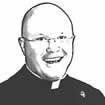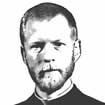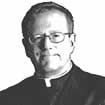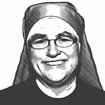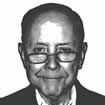
Culture

... by March of 1921, The Heights, the Boston College newspaper, posed the questions, "Why not Boston College? Why not have a unit of the Students' Mission Crusade at the Heights?"

Lester
On May 29, 1924, a gathering of 15,000 Catholic students and hundreds of priests and representatives from nearly every religious order in the Archdiocese of Boston gathered on Boston College's Alumni Field for a convention of the Catholic Students' Mission Crusade (CSMC).
The CSMC was organized in Techny, Illinois, at St. Mary's Mission House in July 1918. At the first meeting, prelates, priests, and laymen representing 30 colleges and universities and eight religious orders and missionary societies gathered to form "a working union of all Catholic students in the United States to promote the cause of the missions" at home and abroad.
The CSMC was organized into student units, each with its own president, executive chairman, and secretary-treasurer. Unit life was based around regular meetings where essays, lectures, posters, talks, and other events helped raise awareness about missions and "as a result, spiritual assistance and material aid flow to the missions."
Student units were expected to report their activities to the Executive Board on a quarterly basis, and each was financed by annual dues: in 1921, 25 cents per student, 10 cents per student for junior members, and an offering of one dollar per year by veteran members.
To further its cause, the CSMC published a widely distributed magazine, Shield, among other publications throughout its existence. It also had its own flag containing a crusade emblem, and assigned order and ranks with names reflecting the same theme.
The movement quickly gathered pace throughout the U.S., and by March of 1921, The Heights, the Boston College newspaper, posed the questions, "Why not Boston College? Why not have a unit of the Students' Mission Crusade at the Heights?"
In April 1922, the same publication finally announced the Class of 1924, then sophomores, had organized a college unit on Tuesday, March 28, where after a brief debate the proposed constitution was ratified without revision. President of the sophomore class, John F. Monahan, stated, "It is a reflection on the spirit of old B.C. that our college is one of the very few colleges in New England which is not allied with this movement. The Class of '24 have organized this unit of the crusade, hoping that by giving this movement publicity we may be able to incorporate all or some of the other classes in its ranks."
In 1923, Monahan was appointed field secretary, responsible for attending the fourth annual convention -- total cost for food and lodging was $10 -- held at Notre Dame University in August. One of the main points to be discussed was the "international organization of Catholic students for the promotion of missionary undertakings."
The following year, it was the young Boston College unit's opportunity to host a convention of the New England units scheduled for May 29, 1924.
Starting at 10 a.m., a procession of students, clergy, and religious wound their way through the campus singing hymns. In the lead were those of the Boston College unit dressed as crusaders, some on horseback, and following in line were parochial and academy school units, and then "the long and imposing line of Sisters, Seminarians, Priests, and Officers of the Mass." They paused briefly for a flag-raising ceremony where they sang "The Cross and the Flag," and then proceeded to Alumni Field, where they were addressed by various missionaries and educators.
Later, a Solemn Pontifical Mass was celebrated by Msgr. John R. Peterson, rector of St. John's Seminary in Brighton, and Father Frank A. Thill of Cincinnati, secretary-treasurer of the CSMC, who preached the sermon. They were accompanied by music performed by the St. John's Seminary choir.
Cardinal William O'Connell also addressed the crowd, and his words were printed in The Pilot the following Saturday. In his address, Cardinal O'Connell mentioned how the Archdiocese of Boston, once a mission that required support from abroad, had now, for several decades, found its role reversed and was a regular supporter of missions.
He calls it "stirring" and "inspiring" that the awareness of support for missions has permeated student life. He believes such an attitude counteracts what he perceives as a "spirit of destructiveness and negation" in the world, whereas the progress of life depends upon positivity and constructiveness.
He warns against the modern mindset to dispense with all previous knowledge, all previous experience, and for the new generation to want to learn everything anew and disregard anything that has come before, a destructive self-assurance, he calls it. But he is hopeful that the spirit of the Crusade will save students from this, for by disregarding all previous knowledge, how could we dispense with the teachings of the saints -- of Jesus Christ himself!
The day's event was closed with the benediction of the Most Blessed Sacrament, during which the Crusaders' Act of Consecration was recited by all in unison.
By the 1930s, the CSMC included over 500,000 members from across the U.S., and over 1 million by the 1950s. Starting in the 1930s, and more pronounced in the post-WWII era, it is noted for its activities and literature being overtly anticommunist.
With still over 1 million members and over 3,000 educational institutions represented in the mid-1960s, rather suddenly, by 1971, the national office closed, and the CSMC essentially ceased to exist.
Historians have attributed its sudden decline to several factors, including the crusader rhetoric and imagery losing its appeal, Vatican II changing perspectives on the role of missions within the church, and, finally, social issues and the Vietnam War shifting the focus of students to contemporary social issues.
- Thomas Lester is the archivist of the Archdiocese of Boston.
Recent articles in the Culture & Events section
-
Family and friends, the 2024 election and ThanksgivingElizabeth Scalia
-
Cardinal O'Connell's 1909 Thanksgiving Day addressThomas Lester
-
Promise and peril of AIRussell Shaw
-
Building a legacyMichael Reardon
-
Scripture Reflection for Nov. 24, 2024, Solemnity of Our Lord Jesus Christ, King of the UniverseDeacon Greg Kandra







